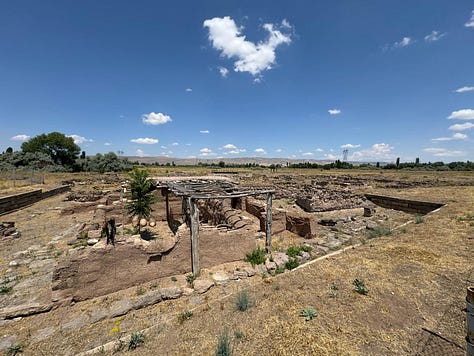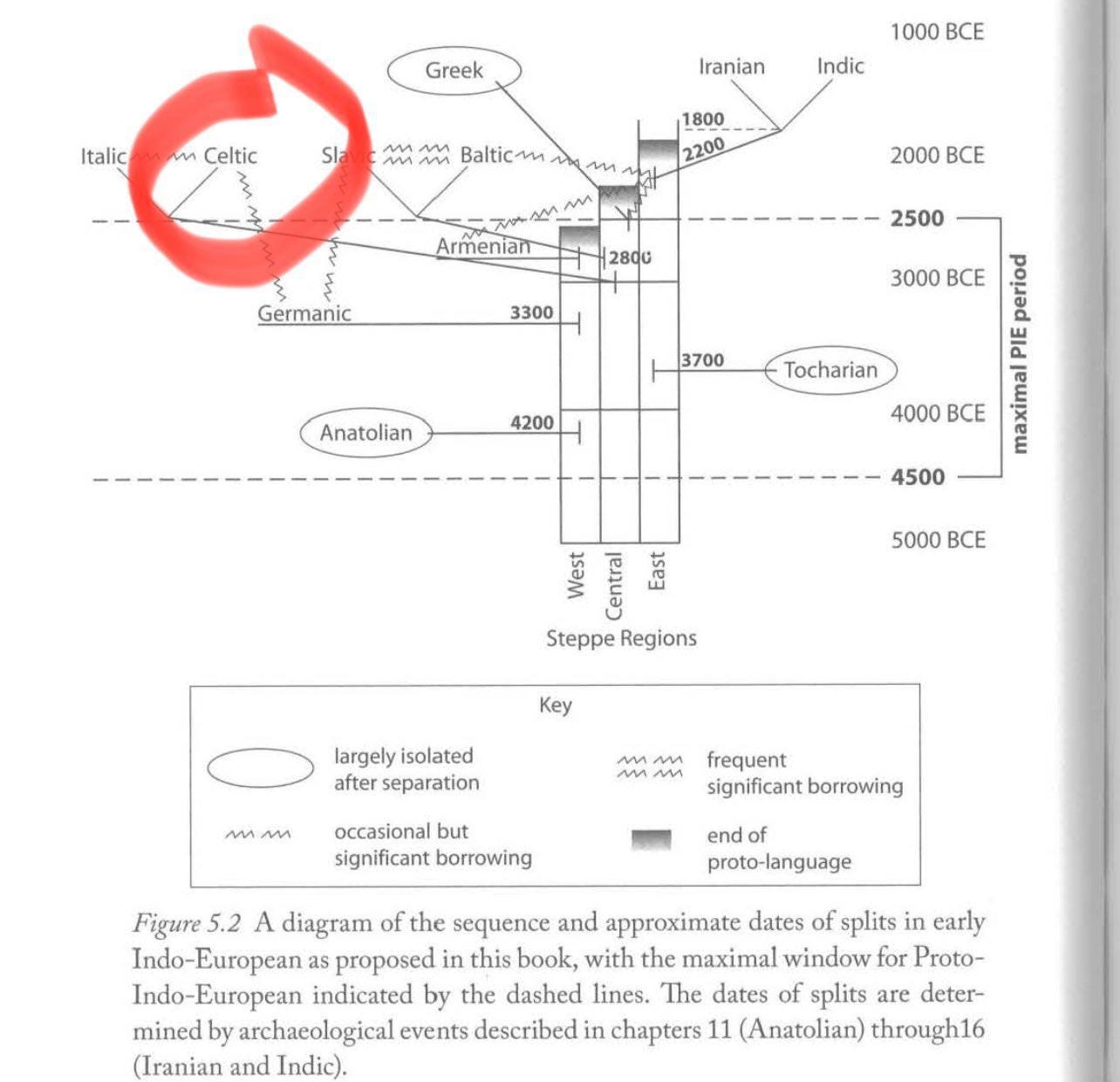First Writing in Any Indo-European Language
Finding Manuland XXIII









I wanted to visit where the first example of writing in any Indo-European language was discovered.
So I visited Kaneš / Kanesh / Kültepe in the modern state of Türkiye.
These are the ruins where merchants’ archives from 1,900 - 1,800 BCE were found.
In these archives was discovered the first writing we possess from an Indo-European language.
Today billions of words in Indo-European languages are written by the half of humanity who speak an Indo-European language every hour.
Yet, with certainty we can trace the place and moment where Indo-European sounds and meanings were first recorded in writing.
Finding Manuland is held together by physical journeys across geographical space.
I am skipping ahead here slightly by moving us into Türkiye.
The last physical location we were visiting in the primary journey strand was the Giant Herdsman episode way back at the beginning (we’ll get back to the significance of the Giant Herdsman in due course GopalD).
Finding Manuland I
In October 2021 I was returning from my final vacation before my forced retirement from my beloved diplomatic posting to Ukraine.
The state of Türkiye, as all states do, had to legitimate itself by reference to the past. In the years after WWI when the entirely new state of Turkey / Türkiye was created, the Hittite Empire was selected by Ataturk as the legitimating precursor state.
The Hittite Empire was one of the three great empires in antiquity (pre-Biblical / pre-1000 BCE), alongside Egypt and Babylon.
The Mound and lower town at Kaneš / Kanesh / Kültepe served for the Hittites the same purpose as the Hittites had served for modern Türkiye.
I’ve written extensively on how Disinfolklore is mobilised by Russia to create artificial cultures in the same manner as the folklore movement served to create a new unifying national culture in modern nation states like Germany, Ireland, Greece, Italy, Norway, Armenia, Lithuania, Ukraine, Russia, and in fact most modern nation states.
Disinfolklore is distinguished from Counter Disinfolklore on the grounds of whether or not informational units / trolls (say, the folk history / mythology being offered up as a means of legitimating a new nation state) is correct / right, and conforms to the Code of Positive Trolls.
Kaneš itself played a key role in the mythology of the origin story of the Hittite Empire. This is true.
However, we know also from the tens of thousands of clay tablets discovered in Kaneš / Kültepe (dating from 1,900 - 1,800 BCE) that Kaneš actually was the place that launched the Hittites onto the global stage.
We also know from a similarly sized library of clay tablets discovered in the ruins of the Royal Palace in the Hittite Empire’s capital Hattusas / Boğazköy / (now) Boğazkale that Kaneš was the place where Anitta the first monarch in the Hittite Empire got his start.
Hittite is known the linguists as the first branch of an Indo-European language to split off. Because of the vast library at Hattusas / Boğazköy / (now) Boğazkale, we have a vast data set of writing in this the earliest branch of Indo-European languages.
Incidentally, I also recently visited Hattusa - see photos below of the ruins of the Royal Palace where 8,000 texts mainly written around 1,300 BCE were found.









We will come back again and again to these locations that are so important to Finding Manuland.
Ancient Ukrainians in Judea
Hearing the word Yamnaya in the context of Ukrainian barrow-grave culture reminded me immediately of the Buddhist Yama. I could not connect the two cultures, geographically separated by thousands of kilometres, as well as by several millennia. Maybe it was just a coincidence that the
Here today, I just wanted to introduce them and the communities which built these places and wrote these texts. These are perennial characters as is Anatolia / Asia Minor in our journeys in Finding Manuland. I will spending a lot of time in the places where the M-N- sound first appears in the written record of Indo-European languages.
Hittite itself is a misnomer.
Hittites themselves called their own language Nešumnili (meaning “in Hittite”). The Nešu sound stems from Kaneš where not only was the mythological foundation of the Hittite Empire, but the actual genetic foundation of the empire also.
So it is not Disinfolklore to say as the Hittites did that Anitta their founding monarch came from Kaneš.
The documents in Kaneš / Kanesh that contain the first Indo-European words in writing that we possess were written around 1,900 BCE.
As previously reported, the consensus of scholars is that the last time the community which would divide into all the main Indo-European branches (Celtic, Germanic, Italic, Hittite, Tocharian, Indic, Slavic, Baltic,…) lived together in one unit in Ancient Ukraine was around 2,500 BCE.
So between 2,500 BCE and 1,900 BCE (when the first evidence that we possess of these Indo-European sounds and meaning were written down) those who brought what would become the Nešumnili / Hittite language travelled from eastern Ukraine and established themselves in Kaneš.
Note how Kaneš is on the bend of a river that runs from the modern city of Samsun on the Black Sea coast, a short boat ride away from Ukraine.
Many scholars assume the carriers of the first Indo-European language that would power a global empire came by land across the Bosphorus. And many may well have done so. However, the proximity to the Black Sea coast makes it a much more likely conduit for an enterprising people.
Continued…
Why No M-N- Sound in Hittites’ Mythological Founder Monarchs’ Monikers?
Here are the first words in any any Indo-European language, for which we have written evidence.
Continued from:
Pagans, Deer, and Migration Routes
The words “Pagan” and “prehistory” conceal far more than they reveal! They’re artifacts of a time when we knew little about what had happened anywhere in the centuries before Christ. Now, due to huge advances in science, archaeology, linguistics, religion, mythology and other disciplines, we know enormous
First in series:
Finding Manuland I
In October 2021 I was returning from my final vacation before my forced retirement from my beloved diplomatic posting to Ukraine.














